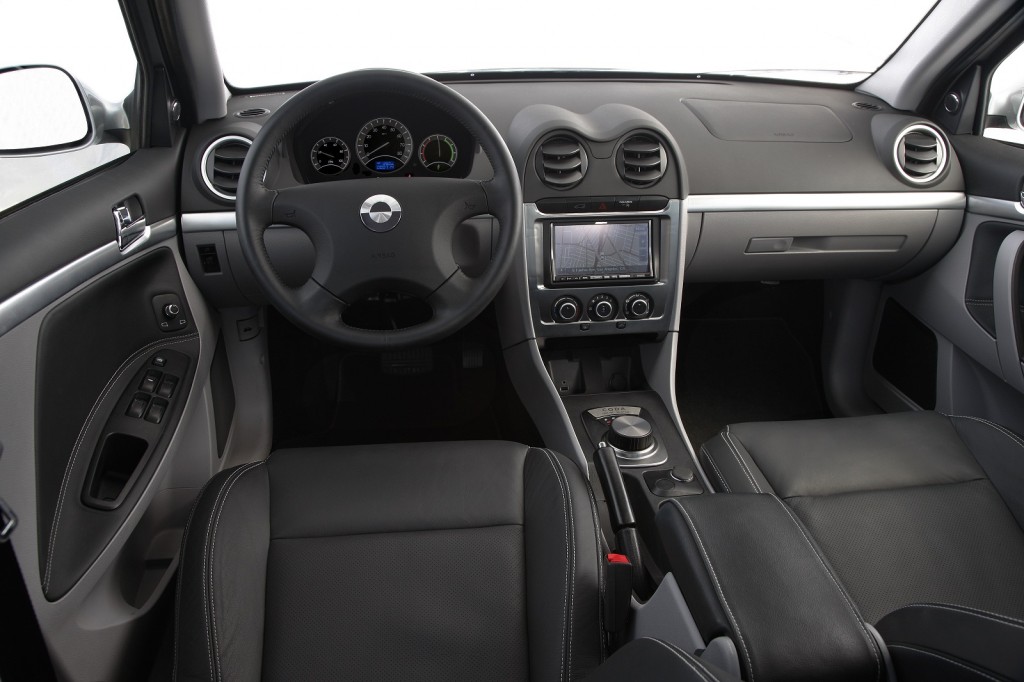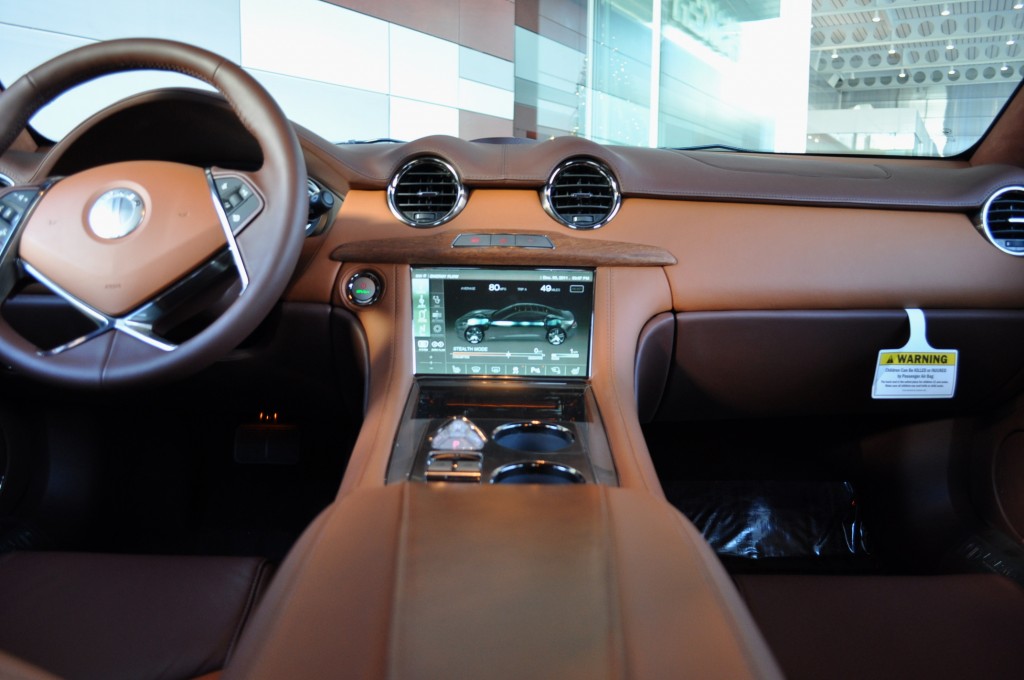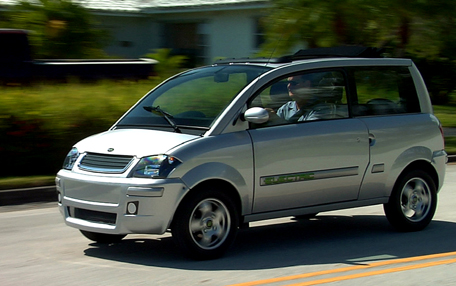There are lots of very good plug-in electric cars for sale now, and quite a few of them--especially Nissan Leafs--are starting to show up on used-car lots as three-year leases expire.
We recently suggested some used hybrid-electric vehicles to avoid on the used-car lot.
Now we turn to electric cars.
DON'T MISS: Ten Used Hybrid Cars To Consider Steering Clear Of
Here are four plug-in vehicles we suggest you think long and hard before buying, no matter how attractive their prices.
Three are battery-electric, and one is a range-extended electric luxury sedan.
[EDITOR'S NOTE: We originally published this article in May 2013, and it proved surprisingly popular. We've gone back and updated it two years later to reflect the latest news and state of the used electric-car market, though we haven't yet added any new entries that we consider enormously substandard. Your mileage may vary.]

2012 Coda Sedan
This one may be easy to avoid, since Coda reportedly only sold 100 or so of its slab-sided battery-electric compact sedans.
The company's Sino-American stew started life as an adaptation of a Mitsubishi-derived Chinese-market Hafei Saibao.
The Coda company fitted lithium-ion cells from China into a battery pack, and inserted it along with the traction motor, into the rolling “glider” in a small California factory.
ALSO SEE: Should I Buy A Used Nissan Leaf (Or Another Electric Car)?
The car might have had a chance if it came to market in 2010 (the original plan) before the Nissan Leaf and Chevy Volt launched.
As it was, the Coda finally struggled onto the market well after both those cars from major auto companies landed in dealerships across the country.
While it appeared to have a real-world range of close to 100 miles, it was so riddled with detail deficiencies that not only was it not ready for prime time, it was genuinely irritating to drive.

2012 Coda Sedan
If you ever see one on a used-car lot, be aware that parts and service may be a challenge.
Then consider a used Nissan Leaf instead. Leafs from 2011 and 2012 are now selling below $10,000, an they're still piling up on some dealer lots.
Coda, meanwhile, is entirely out of the car business and has now retreated to selling stationary battery storage systems.
![2012 Fisker Karma in Costco parking lot, Santa Monica, California [photo: Chris Williams] 2012 Fisker Karma in Costco parking lot, Santa Monica, California [photo: Chris Williams]](https://images.hgmsites.net/med/2012-fisker-karma_100411138_m.jpg)
2012 Fisker Karma in Costco parking lot, Santa Monica, California [photo: Chris Williams]
We have to admit, Fisker's only production car is one striking design. And many of the 2,000 or so Karma owners love their cars.
That said, the company hasn't built a car since July 2012, and most dealers long ago abandoned the brand--and their Fisker buyers--in droves.
Meanwhile, asking prices for used Fisker Karmas seem to hover around $50,000, for cars that sold new a few years ago for $106,000 and more.

2012 Fisker Karma EcoSport
But Fiskers suffered from numerous quality problems on launch that led to recalls, service bulletins, and updates.
A very active Fisker forum is the recourse for owners who have to source their own repairs and parts for a car that's still only three years old.
The Karma itself is a two-and-a-half-ton car with the footprint of a BMW 7-Series, so little interior room that the EPA calls it a subcompact, and a jaw-droppingly tiny trunk.
It's also the least energy-efficient plug-in electric passenger car ever sold on the U.S. market.
![2012 Fisker Karma + Aero L-39 Albatros jet trainer, Hollister Municipal Airport, CA [by Refael Azi] 2012 Fisker Karma + Aero L-39 Albatros jet trainer, Hollister Municipal Airport, CA [by Refael Azi]](https://images.hgmsites.net/lrg/2012-fisker-karma_100479503_l.jpg)
2012 Fisker Karma + Aero L-39 Albatros jet trainer, Hollister Municipal Airport, CA [by Refael Azi]
The company's new owner is China's largest auto-parts maker, Wanxiang. It is reportedly working to fix many dozen quality issues and design flaws, with the goal of relaunching the Fisker Karma in 2016 or later.
To its credit, Wanxiang has considerably stepped up support for the existing base of Karma owners, and is working to re-establish service centers and make parts more available.
It's possible that the Fisker Karma story will have a happy ending, but we suggest that potential buyers do a lot of research to understand what they're getting into.

Assembly of Think City electric cars, Elkhart, Indiana, Jan 2011
Think City
In 2011, when we visited the Indiana factory where Think Automotive planned to assemble plastic-bodied two-seat electric cars using a decade-old design, optimism was in the air.
It proved to be unjustified.
Think sold a few hundred of its City electric vehicles, but at a price close to that of the larger, four-seat, five-door Nissan Leaf--which had a longer range, better build quality, and a less primitive driving experience.

Think City assembly plant, Elkhart, Indiana, Jan 2011
Think ultimately collapsed in bankruptcy, for the fourth and final time, and new Think City cars in the U.S. were remaindered out at vastly reduced prices.
The Think is crude, not particularly fast, and simply not up to modern car standards. And to give it its due, it did meet the crash-safety requirements of 15 years ago, when it was first designed.
It's highway capable, but not a very pleasant place to spend time or get around. Inside, it makes even the most basic Smart ForTwo look like a pinnacle of high design.
You may see them running around for awhile--they seem to be pretty durable--but a used Leaf is likely to be a much better bet on almost all fronts.

zenn
Neighborhood Electric Vehicles (any of 'em)
These cars, also known as low-speed electric cars, are not "highway capable," which means that they are limited to top speeds of 25 mph or 35 mph.
That's fine for many around-town uses, except for two problems.
First, state and local regulations governing the use of these cars vary widely, meaning they can't automatically be used everywhere in the country.
Second, and worse, they don't comply with crash-safety regulations for passenger protection. In fact, they're required to have little more than lights, wipers, and seat belts.
Even at their low speeds, you're at far higher risk in a NEV if a Ford F-150 pickup truck runs a stop sign than you are in a "real car" that has been required to meet the many Federal crash-safety regulations.
They come under many, many different brands, including GEM, Miles, and ZENN, to name just a handful.
Some even look like small conventional cars. But they're not. They are the epitome of the old "fancy golf cart" epithet that's now thankfully vanishing from discussion of electric cars.
Did we mention that used Nissan Leaf?
______________________________________________













